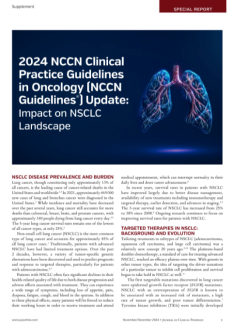Oral JAK2 Inhibitor Offers a Viable Second-Line Treatment for Myelofibrosis, But Challenges Remain
Fedratinib, an oral JAK2 inhibitor, has demonstrated efficacy in treating myelofibrosis (MF), particularly in patients who have failed ruxolitinib therapy, according to a study published in the Blood Cancer Journal.
Clinical trials and real-world studies indicate that fedratinib effectively reduces spleen volume and alleviates symptoms. However, its therapeutic benefits may be limited in patients with advanced disease or prolonged prior exposure to ruxolitinib.
“Herein, we review the clinical trial data leading to fedratinib’s approval and collate data accruing from reports of the “real-world’ use of this drug and suggest how this drug may best be integrated into the rapidly expanding MF therapeutic armamentarium,” researchers explained.
Clinical trials leading to fedratinib's approval, such as the JAKARTA and JAKARTA-2 studies, demonstrated significant spleen volume reduction (SVR35) and symptom improvement in patients with intermediate-2 or high-risk MF. The JAKARTA study showed that fedratinib achieved SVR35 rates of 36% to 40% compared with 1% with placebo, along with notable symptom response rates. The JAKARTA-2 study focused on patients previously treated with ruxolitinib and reported a SVR35 of 31% at week 24. The FREEDOM2 trial further solidified fedratinib's role in second-line treatment, showing a SVR35 rate of 36% compared with 6% with best available therapy (BAT). Ongoing trials, such as the FRACTION trial, are exploring the potential of combining fedratinib with other therapies to further enhance immune responses in patients with MF.
Real-world data support the findings from clinical trials, indicating fedratinib's effectiveness in managing MF symptoms and reducing spleen size in patients who have failed ruxolitinib therapy. Studies have reported varying degrees of spleen response and symptom improvement, with some showing significant reductions in spleen length and symptom burden. Moreover, real-world studies suggest a potential survival benefit with fedratinib compared with non-fedratinib therapies in the post-ruxolitinib setting. However, it is important to consider that the effectiveness of fedratinib may be influenced by factors such as prior ruxolitinib dosage, duration of exposure, and patient-specific characteristics. While gastrointestinal toxicities and hematologic adverse events are common, strategies to manage these side effects have proven effective.
“In summary, a more effective use of fedratinib may require its administration earlier in the disease course and in the context of second-line treatment,” concluded the study authors. “Timely identification of ruxolitinib failure that prompts a treatment change may enhance fedratinib’s therapeutic potential.”
Reference
Duek A, Leviatan I, Jarchowsky Dolberg O, Ellis MH. Fedratinib for the treatment of myelofibrosis: a critical appraisal of clinical trial and "real-world" data. Blood Cancer J. 2025;15(1):6. doi:10.1038/s41408-025-01211-1



















